Swedish designer Carolina Härdh has a good philosophy for her creative process: “As a designer, I need to take responsibility for my decisions in terms of material choice and manufacturing. Because, whatever I create, it will live on longer than I will do, so I want to make sure it’s not toxic. Using design as a tool for change has become my way of understanding myself, nature and sustainability.”
For Härdh, this means making furniture out of food waste. But it’s an idea that Syrian artist and architect Mohamad Hafez might relate to. He makes beautiful, intricate miniatures of Middle Eastern streets which are created not just to enchant but also to understand himself and what has happened to his homeland.
Design can be a great tool to make sense of the world as well as shape it.
For more news on architecture, sustainable living, art, fashion and new ideas, sign up for our monthly newsletter here
Karl Lagerfeld’s poster art
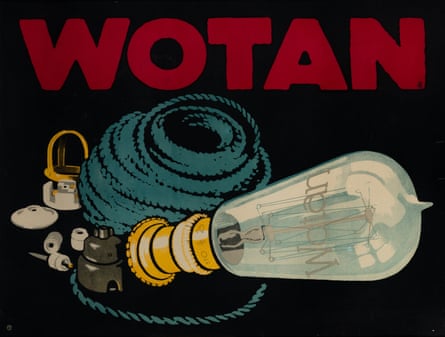
When fashion designer Karl Lagerfeld was a child, he found an old magazine in his family’s attic in Hamburg and fell in love with the pictures and illustrations on its pages. Unsurprisingly for Karl Lagerfeld, it turns out his taste was exceptional: the magazine was a rare pre-first world war edition of Simplicissimus, a satirical German weekly. The find ignited a delight in German posters and graphic design and, over his lifetime, Lagerfeld collected a unique archive of prints, mainly created between 1905 and 1920, in a style known as Plakatstil or Sachplakat, which is typified by bold type and strong, graphic colours.
German designers of that time respected the national industries and work ethic, and worked hard themselves to produce imaginative designs to sell mundane products.
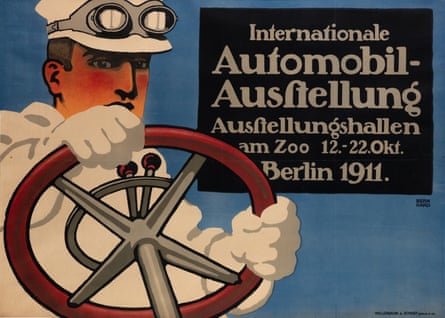
The Karl Lagerfeld collection includes poster art by artist Lucian Bernard who pioneered the Sachplakat or “object poster”. His ability to transform adverts for mundane objects into works of art is clearest in his pieces for Adler typewriters and Manoli cigarettes. There are also key works by Ludwig Hohlwein, a prolific poster artist whose designs transformed ordinary objects, such as light bulbs, typewriters and tools, into striking graphic images.
Lagerfeld was an insatiable collector who amassed fantastic assortments of everything from art and furniture to luggage and more than 200 pairs of his trademark fingerless gloves. Since his death in 2019, Sotheby’s has held auctions of Lagerfeld’s possessions, separating the spoils of his obsessions into lots. This May, his German poster art collection will be one of the final events to disperse the personal effects of the designer and creative. If you find yourself bidding on one of these gems without perhaps the funds to cover the extravagance, remember what Lagerfeld himself said: “If you throw money out of the window, throw it out with joy. Don’t say: ‘one shouldn’t do that’ – that is bourgeois.”
Sotheby’s Cologne holds a number of auctions of Lagerfeld’s Estate 29 April – 6 May. The sale of his poster collection takes place on 4 - 5 May
Syrian miniatures shed light on the big picture

Syrian born architect Mohamad Hafez started making his mesmerising dioramas because he was homesick. He travelled to the US in 2003 on a single-entry visa to study architecture, and realised he wouldn’t be able to visit home until he finished his course in case he was barred from re-entering. He didn’t see Damascus for eight years. To compensate, he made miniature Middle Eastern streetscapes from sketches of his homeland.
Since the start of the Syrian War in 2011, his motivation has become more complex. His tiny world now reflects the devastation of conflict ripping through the beautiful architecture and communities of his home. Hafez hopes his sculptures will help humanise the victims of the war. “I want to remind people of Syria’s rich cultural history that is being eradicated through war,” says the artist. “I want to share the stories, to show what is so rich about the region and what is so devastating that somebody could risk all their family in a little float over the Mediterranean. How bad does it have to be for somebody to risk the lives of their own kids on a little inflatable?”
British audiences can see Hafez’s emotional and beautifully skilled work for the first time at his current exhibition in Brighton. Americans can check out his latest project in Connecticut. Hafez has opened Cafe Pistachio in New Haven which he calls “a community safe space”. It serves Syrian coffee and Middle Eastern desserts and, hopefully, a side order of cultural education. The cafe is furnished with the old-fashioned radios, art and mosaic tables that, to him, represent Syrian homes. The venue is Hafez’s attempt to entertain people in the style of his homeland at a time when it’s hard for them to travel there. “I truly believe in architecture’s power of touching spirits and changing minds,” he says, explaining that he wanted to see if the nostalgia of his miniatures could work on a grand scale.
Journeys From An Absent Present to a Lost Past by Mohamad Hafez is at Fabrica, Brighton, until 29 May. Pistachio’s opening hours are on the cafe’s website
Furniture made from food

Swedish designer Carolina Härdh has taken the concepts of local, zero-waste and the circular economy to their logical conclusion with the furniture range she’s made for Japanese restaurant Vrå in her hometown of Gothenburg.
It’s all made from the food waste created by the restaurant.
Härdh uses a mix of rice starch, kombu, fish bones, and oyster shells to make a version of terrazzo. The oysters are a local crop – Crassostrea gigas or Pacific oysters which originated in Japan but are abundant off the Swedish west coast. All the other ingredients were plentiful in the restaurant’s dustbins.
“It’s important that we search for local materials that we have to hand,” explains Härdh, “whether that’s a typical kind of wood, a food ingredient or harvest byproduct or something that’s ended up on at local dump. We need to take responsibility for what already has been produced and see what resources we already have.”
Instead of the cement base used to bind the marble or granite fragments of traditional terrazzo, Härdh’s biomaterial uses ground shells and is bound together with fish glue. It’s strong enough to be used for restaurant benches, tables and chairs. Any waste is used to make chopstick rests, or used as fertiliser for Vrå’s rooftop vegetable garden. And when the furniture reaches the end of its lifespan, it will either biodegrade or recycle.
Härdh hopes to make circular, zero-waste principles tangible and understandable for the restaurant’s guests. “As a designer, I need to take responsibility for my design decisions in terms of material choice, manufacturing. Because, whatever I create, it will live on longer than I will do, so I want to make sure it’s not toxic. Using design as a tool for change has become my way of understanding myself, nature and sustainability.”
London Craft Week returns
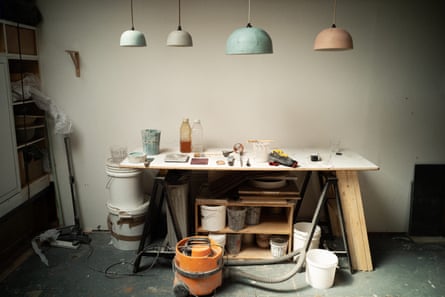
London Craft Week returns in May, featuring work by more than 765 artists and makers working in every area from heritage skills to material innovation. This year’s programme celebrates the international craft community – including the launch of country pavilions. This first year, they’ll focus on Malaysia and Norway.
Other themes include artistry in fashion (including a hook-up with the V&A Museum and the excellent Menswear exhibition) and sustainable and digital craft. The Fabricant – maker of the first digital-only dress – will lead a workshop on the creative possibilities of digital fashion during LCW.
The winner of the inaugural John Smedley Craft Prize will also be announced and there will be a maker’s market at The Royal Exchange to celebrate the Platinum Jubilee and the work of the Queen Elizabeth Scholarship Trust. The New Craftsmen also celebrates the gallery’s 10-year anniversary with its exhibition, Plant Explorations.
“From the first LCW, we wanted to be a practical showcase of what we call the Iceberg of Creative Talent,” says Guy Salter, chairman of LCW, “which means championing less well-known artists and household names. The last two years have seen their numbers grow but they remain undiscovered and undervalued. So this year we redouble our efforts to draw as much attention as possible to men and women in workshops, studios and at home creating quite exceptionally special things.”
London Craft Week runs 9-15 May. For details of talks, exhibitions and workshops, go to the London Craft Week website
Sign up for our monthly Design Review newsletter covering architecture, sustainable living, design and art
Fritz Hansen celebrates its 150th anniversary
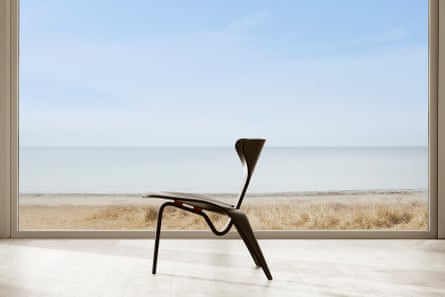
This year marks the 150th anniversary of Nordic design company Fritz Hansen. The original Hansen was a cabinetmaker from Nakskov, Denmark. Right from the start, the company made innovative designs. The founder’s office chair from 1878 was one of the first to have a plywood back and laminated veneer. Hansen also spearheaded the steam bending wood technique for furniture, working with the method’s inventor, Michael Thonet, in the Scandinavian market.The desire to modernise continues to this day with launches such as the NO2 Recycle chair made from plastic household waste. Over the years, Fritz Hansen has collaborated with some of the most prestigious names in Scandinavian design, as well as championing new young talent. While greats such as Arne Jacobsen, Hans J Wegner and Verner Panton are a key part of the company’s history, Nendo, Jaime Hayon and Cecilie Manz have created recent masterpieces.
To celebrate its first 150 years, the house is releasing some of the most famous designs using special fabrics, colours and materials including the Egg, the Lily and the Swan chairs by Jacobsen, and a PKO chair and PK60 table by Poul Kjaerholm.
As Josef Kaiser, CEO of Fritz Hansen, says: “Ours is a story of exquisite design created on a foundation of craftsmanship and innovation. The anniversary designs convey the modern-day relevance of each design.”
The collection can be seen during Clerkenwell Design Week from 24 May at the Fritz Hansen showroom in London
Public art inspired by stories and research
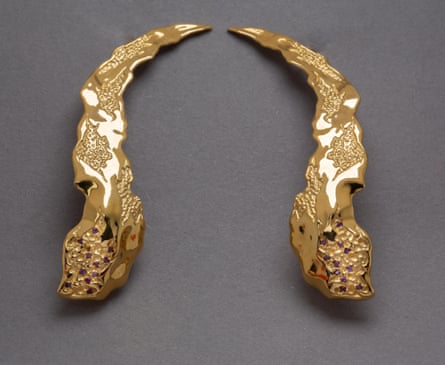
An unusual design show takes place in London’s Mile End Pavilion over the next month. The exhibition displays works inspired by University College London (UCL) research and created in collaboration with artists and communities based around the university’s new UCL East campus in Olympic Park, which is currently under construction.
The Trellis project started in 2018 and this latest exhibition showcases a year’s work between six artists, nine researchers and numerous partners based in east London. The projects are as different as they are fascinating, ranging from work around local food poverty and AI discrimination to raising awareness of cancer.
Bubble Worlds – a cocoon installation which looks like it’s breathing – comes from the experiences of local refugees during lockdown. It’s created by the refugee community from Code Your Future, collaborating with artist Duncan Paterson and UCL roboticists. UCL Cancer Institute research fellow, Dr Ayse U Akarca, and jeweller Kassandra Lauren Gordon collaborated with people from Great Ormond Street hospital with experience of cancer, to co-create Tailor Made, a collection of jewellery designs inspired by cancer cells.
Gordon was a community worker and domestic violence professional before she became a jeweller. Giving voices to communities is important to her. “I believe that art can change the world and improve lives,” she says. “Jewellery is already used to mark major points in people’s lives, like marriage. In this project we are using jewellery to break social taboos about disease and health, and to help people reclaim their narratives.”
UCL head of public art Sam Wilkinson says of the exhibition: “Trellis is important, it offers visitors a unique chance to hear the voices of those who are rarely heard. These artworks are evocative, surprising and eye-opening.”
Trellis is at The Art Pavilion, Mile End Park, until 8 May
